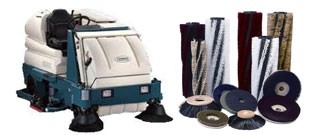|
 Sweeper Parts Visalia - Visalia is an agriculturally based city spanning 28.6 square miles. San Francisco is 230 miles northwest from the city and Los Angeles is 190 square miles south. The city, with a population of 125,921, is now the 46th largest city in California and the 204th biggest within the United State. It was ranked the 3rd fastest growing city in the state of California and the 19th fastest growing city in the US in the year 2007. The city is situated within the middle of the San Joaquin Valley in Central California. Residents proudly refer to themselves as "Visalians." Visalia is nicknamed the "Jewel of the Valley" and is considered to be the Gateway to the Sequoias.
The town of Visalia was established during 1852, and is considered to be the very first permanent inland settlement between Los Angeles and Stockton in the Sequoia Valley. Located a few miles away is the tallest mountain range within the United States, the Sierra Nevada. Visalia is likewise the nearest city to the Sequoia National park. Giant Sequoia trees, among the biggest living things on earth, could be found here.
The financial system within Visalia mainly comprises agriculture, in particular: grapes, olives, citrus, cotton, and nursery products. Furthermore, driving the financial system are the distribution, manufacturing and livestock facilities (mostly electronic and paper products). The fastest growing employer base is in the light manufacturing and commercial/industrial distribution sectors.
According to the 2009 Comprehensive Annual Financial Report, the top ten of the employers of the city comprise City of Visalia, County of Tulare, Cigna, Jo-Anns Stores, College of Sequoias, International Papers, Visalia Medical Clinic and Kaweah Delta Medical Center.
There is one drawback to living in Visalia is that it is in close nearness to the Pacific Ring of Fire. There are roughly 10,000 earthquakes that hit the Pacific Ring of Fire each and every year. There have been no major earthquakes that have ever hit the city, though it does feel some of the aftershocks. Luckily, most are too low of an intensity to be felt. Almost all areas within the San Joaquin Valley are susceptible to blind thrust earthquakes. Some parts of the city are susceptible to floods.
| |
















